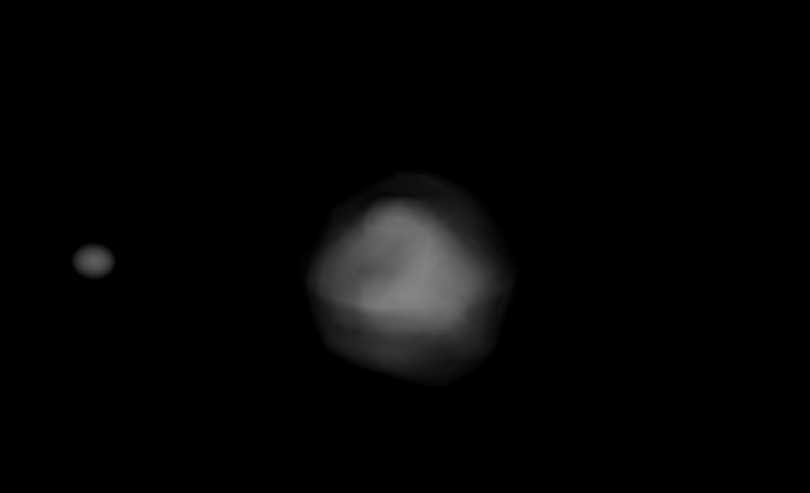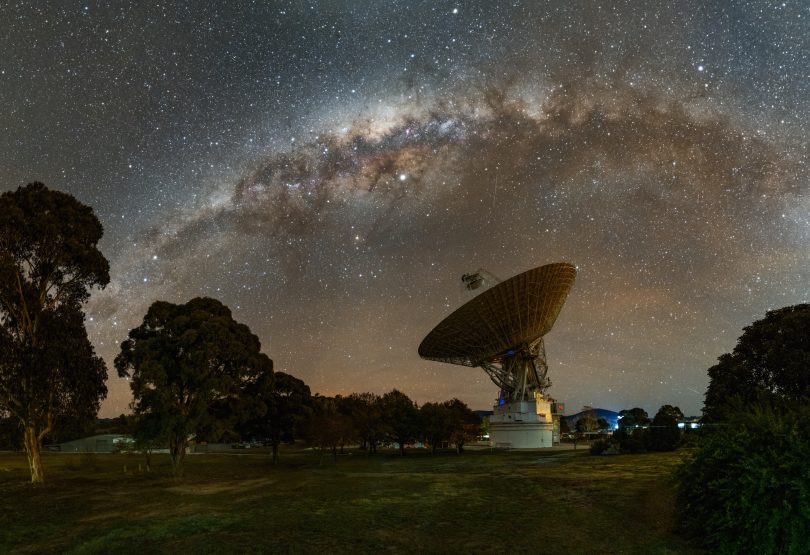
The NASA DART spacecraft and Didymos asteroid illustration. Photo: NASA/Johns Hopkins, APL/Steve Gribben.
NASA is testing whether it can save the Earth from life-threatening asteroids by crashing spacecraft into them, and Canberra’s deep-space tracking station is playing a crucial role.
The NASA Double Asteroid Redirection Test (DART) Mission aims to change the trajectory of an asteroid 11 million kilometres from Earth by hitting it with a craft the size of two cars end-to-end.
The craft will be moving at an astronomical 6.6 kilometres per second.
The target moonlet is 160 metres in diameter, roughly the length of the field at Canberra’s Bruce Stadium, and is in orbit around the larger 780 metre Didymos asteroid.
The CSIRO NASA Tracking Station Canberra will help communicate with the craft during its year-long mission.
The centre’s Glen Nagle says the station will also monitor the crucial moment of impact, “those final minutes and seconds as it impacts at about 24,000 kilometres per hour,” he said.
NASA’s new solar-electric thruster system, onboard cameras and sophisticated navigation software will help guide the craft to its target.
The collision will change the moonlet’s orbit by only a fraction of a degree, but NASA says it should show if its ‘kinetic impactor’ technique can be used to redirect any Earth-threatening asteroids in future.
NASA stresses that the target object is not a threat to the Earth, but it is a perfect testing ground.

A simulated image of the Didymos system. Image: AIDA Workshop.
Mr Nagle says it’s an exciting event for the local space and astronomy science team to be a part of.
“This is another exciting event, literally another day when we’re making history here at the deep-space tracking station, being part of NASA’s DART mission,” he says.
“The first in a series of planetary defence missions that they’re working on, to be able to save planet Earth just in case a big asteroid is coming our way.”
The Canberra tracking station already observes and catalogues near-space asteroids to help assess their threat to the planet.
They bounce radio waves off the objects to measure size, rotation and see if they are headed our way.
“There’s a lot out there, some big objects, and we’re kind of in terms of Earth’s history overdue for something to come our way,” he says.

The Canberra Deep Space Communication Complex plays a significant role in many NASA missions. Photo: Alex Cherney (CSIRO).
It’s been 65 million years since the asteroid impact that led to the demise of the dinosaurs.
Mr Nagle says Canberra will be a part of important ongoing planetary defence work.
“Once you get up to those larger objects of five to 10 kilometres, those are the sorts of extinction events we want to avoid for humanity,” he says.
“The great thing about missions like DART… is it provides us a much better chance to survive than the dinosaurs had.”
The DART mission launches at 5:20 pm on Wednesday, 24 November (AEDT) and is expected to hit the moonlet in late September 2022.
You can follow the Double Asteroid Redirection Test (DART) Mission at NASA’s website.














